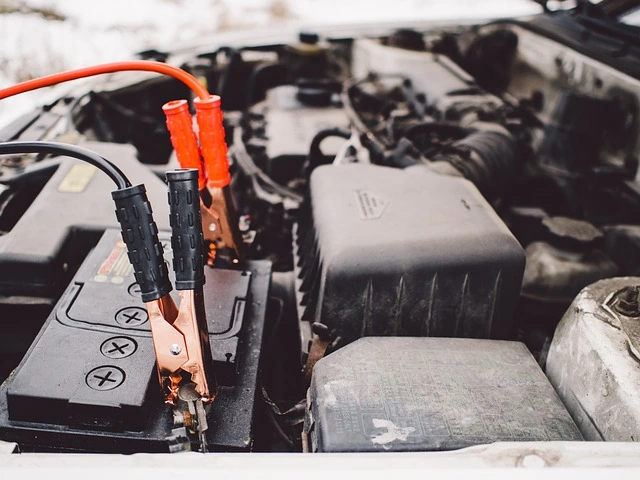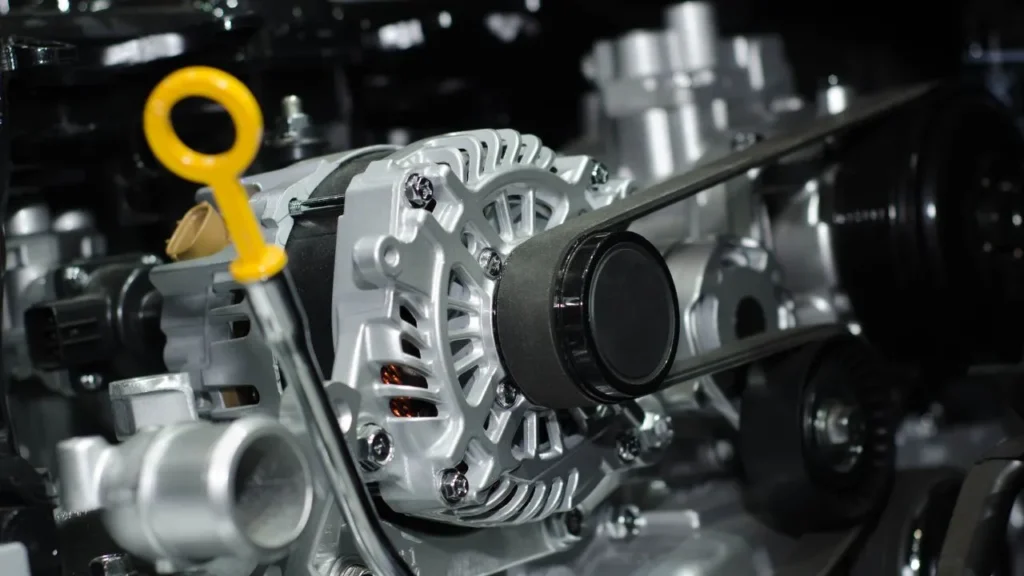Honda CR-V Dead Battery
What’s more frustrating than finding your car won’t start in the morning due to a low battery? Fortunately, resolving a dead battery issue in your Honda CR-V is not that difficult if you know what to do.
In this guide, I’ll walk you through the steps to take when your CR-V battery dies and discuss some factors that can cause a dead battery so you can prevent it from happening again.
How To Fix
When the battery dies, the car becomes completely inoperable. For some people, seeing a car that won’t start and electronic devices that don’t turn on can be alarming.
Fortunately, getting out of this situation isn’t too difficult, even if you lack mechanical experience.
With a few simple tools, you’ll have your CR-V back on the road quickly.
Step 1: Jump-start the Vehicle or Charging The Battery

To jump-start the CR-V, you’ll need to connect the dead battery to a good battery from another vehicle. If you have a spare battery that isn’t attached to a car, that can also work.
You’ll need jumper cables to connect these two batteries. This simple tool is essential, and I highly recommend keeping it in your vehicle as part of your roadside emergency kit.
To jump-start the vehicle using another car’s battery, follow these steps.
- Position the Vehicles: Find a vehicle that’s running normally and park it close to the one with the dead battery. Make sure the fronts of both vehicles are near each other so the jumper cables can reach between them.
- Connect the Positive Terminals: Attach the red clamp of the jumper cable to the positive terminal of the dead battery. Jiggle the clamp slightly to ensure it’s securely attached. Then, attach the other red clamp to the positive terminal of the working battery, making sure it’s also securely connected.
- Connect the Negative Terminals: Clamp the black end of the jumper cable to the negative terminal of the working battery. Next, attach the other black clamp to the negative terminal of the dead battery.
- Check Connections: Double-check that all jumper cable connections are solid.
- Start the Engine: Start the engine of the working vehicle and wait 1-3 minutes.
- Start the Dead Vehicle: Try to start your CR-V. If it partially turns over but doesn’t fully start, wait 10 minutes and try again. If the battery was the issue, it should start up without any problems.
- Disconnect the Cables: Once the engine is running, disconnect the cables, starting with the black clamp on the dead battery.
- Charge the Battery: Drive your CR-V for at least twenty minutes to allow the battery to recharge.
A portable car jump starter is another practical way to start your car when the battery is dead. Many online stores sell portable car jump starters at relatively affordable prices, around $100. This tool can jump-start your car easily and quickly. Simply connect the red and black clamps to the battery, and you can start your CR-V, even if the battery is dead.
Besides jump-starting, another simple solution is to charge your CR-V’s battery with a wall charger. This method is quite effective, and I often use it when facing a dead battery situation but not in a hurry to leave.
You’ll need a wall battery charger for this. Just charge the dead battery overnight; if it is still in good condition, it should work normally the next day.
Step 2: Get the Battery Checked
After successfully starting your CR-V using the above technique, take it for a drive so the battery can charge. However, if you notice that your battery isn’t holding a charge, you may need to perform additional checks.
If you have a multimeter, you can test the battery yourself at home. If the battery voltage reads below 12.66 volts when the car is off or drops below 10 volts when cranking up, it’s likely time for a new battery.

If you don’t have a multimeter or aren’t comfortable testing it yourself, many local auto parts stores offer this service for free. Check with your nearby Advance Auto Parts or O’Reilly Auto to see what’s available.
Step 3: Find and Address the Underlying Problem
If your CR-V’s battery is dead, it might be because you accidentally left some lights on overnight. I’ve done this a few times and found the battery dead in the morning. However, if there’s no obvious reason for the battery to die, an underlying issue may need to be addressed.
In most cases, replacing the battery with a new one will solve the problem. Car batteries typically have a lifespan of about 3 to 5 years, depending on maintenance and environmental conditions.
If the battery isn’t the issue, there could be other factors causing it to die. We’ll discuss these further in a moment.
Why Does the Car Battery Keep Draining?
If you jump-start the CR-V and the battery dies again, or if you replace it with a new one but it dies within months, there could be a bigger problem. Car batteries aren’t supposed to keep draining. If you’ve checked the battery and it appears to be fine, consider these possible issues.
Old Battery
Before investigating further, I strongly recommend checking the condition of the battery. When a battery begins to fail, it may no longer hold a charge properly, which is often why it keeps dying.
The solution is straightforward: check the battery or replace it with a new one. In some cases, you might find corrosion on the connections, which can interfere with the battery’s ability to recharge.
If you discover corrosion on your car battery, try cleaning it with baking soda and water.
Parasitic Draw Issue
Parasitic draw is an electrical current drain that occurs when the ignition is turned off. It’s called a parasitic draw because it continues draining the vehicle’s battery power even when it is not in use, eventually causing the battery to die.
Unfortunately, Honda CR-V models from 2011 to 2019 are known to have this issue. According to a report from carfromjapan.com, there were about 1,719 cases of battery problems reported between 2012 and 2020.
There are various causes of the parasitic draw. On the CR-V, Honda has identified the VSA (Vehicle Stability Assist) modulator as a potential culprit.
According to Honda, the VSA software logic may not shut down correctly, causing the VSA modulator to continue drawing 350mA of current even when the car is off. This amount of current is more than enough to drain the battery within a few days.
You may need to visit the dealership if you think something similar is happening to your SUV.
Electrical Components Left Running
Another reason the car battery might drain is electronic equipment remains on when the engine is off. This often happens when you rush out of the vehicle and leave the cabin lights, headlights, or other accessories on. The battery that supplies power will be drained.
If you don’t return to the car before the battery is completely drained, you won’t be able to start the engine.
I’ve experienced this twice myself—leaving the cabin lights on for a few days, only to find the car wouldn’t start because of a dead battery.
Bad Alternator

An alternator generates electricity when the engine is running. The energy it produces recharges the battery and powers the electronics, allowing the battery to rest while the engine is running.
If the alternator fails, the entire load required by the electronics is drawn from the battery, leaving no power to recharge it. Generally, alternators last anywhere from 80,000 to 150,000 miles, or even longer, depending on the quality of the components and the manufacturer.
When the alternator begins to fail, you may notice symptoms such as:
- Reduced power to car accessories, especially while idling.
- Dim lights.
- A battery warning light on the dashboard.
Harsh weather
Extreme weather conditions, whether cold or hot, can negatively impact a car battery. Cold weather is especially harmful because it drains the battery more quickly.
But what about heat? Heat is even worse for car batteries, as high temperatures cause the electrolyte solution in the battery to evaporate faster.
If you live in an area with an extreme climate, it’s important to perform regular checks and replace the battery promptly to avoid being stranded due to battery issues.
Battery Replacement Cost
The cost of replacing a car battery depends on several factors. The first is the price of the battery itself, which varies based on quality—typically, you get what you pay for. If you can’t install the battery yourself, you must also factor in labour costs.
The Honda CR-V uses a battery with a group size of 51, and prices range from $150 to $250. I recommend trying to install it yourself, as it’s not difficult.
However, if you’re uncomfortable doing it yourself, I suggest purchasing the battery from a local auto parts store. They often offer free installation when you buy the battery on-site.
Frequently Asked Questions
Image Credit:
Image by Drazen Zigic on Freepik
